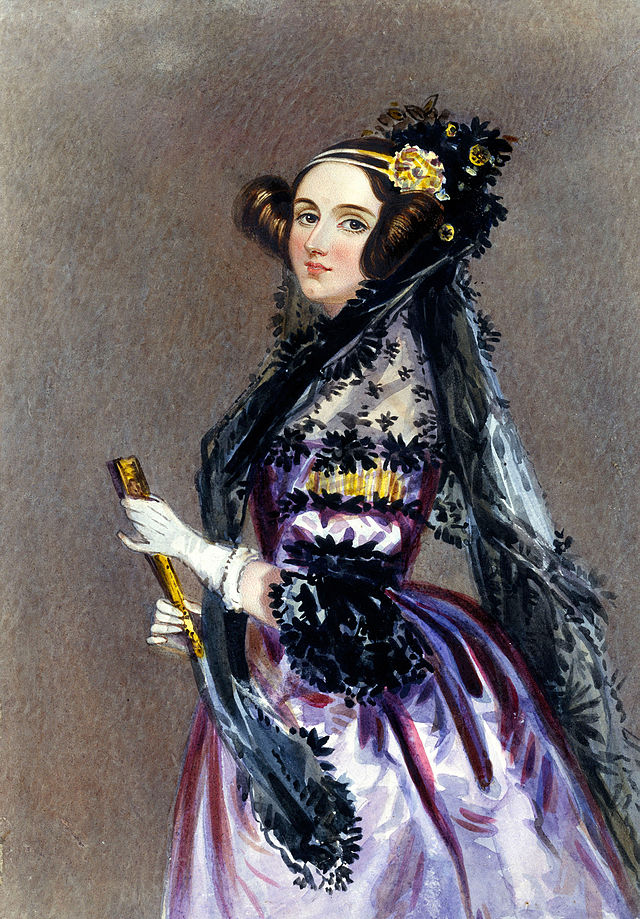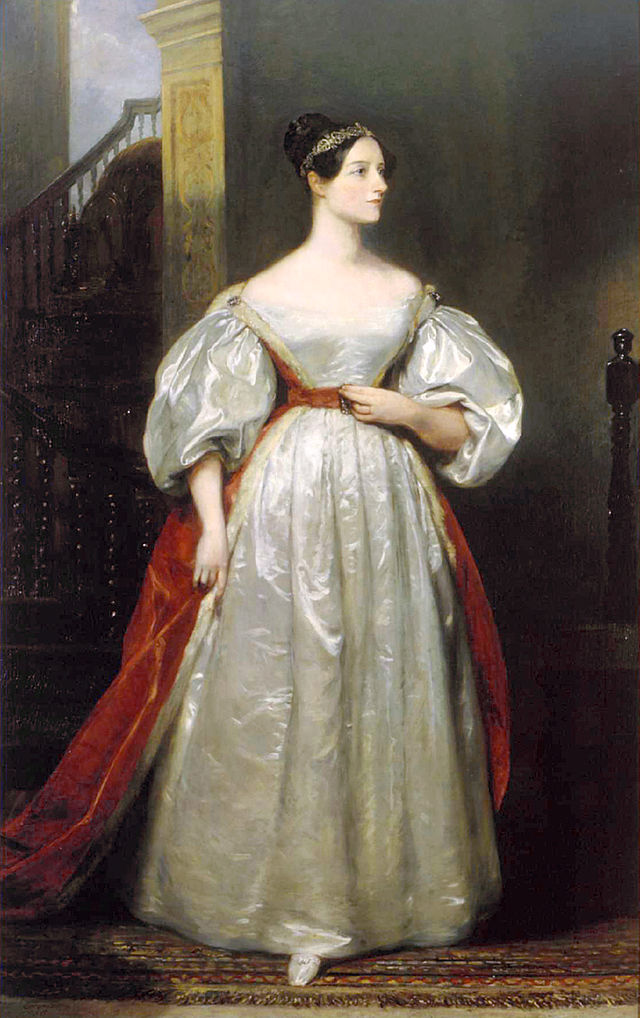

Oh, Ada! Poetical Scientist, Metaphysical Analyst and genius of Mathematical Arts. Mother of programmers. Midwife of computers everywhere. Daughter of a libertine poet and a self-centered socialite/ strict moralist (depending on the day), little Ada proved once and for all that a person can grow and thrive and wonder and create glittering futures despite the inconvenience of sub-standard parents.
After Lord Byron abandoned his family, and Annabella Millbanke abandoned little Ada into the arms of her doting grandmother and a squadron of tutors, Ada grew up curious and intellectually ravenous. Her mother, seeing the ravages of poetry (and laudanum) on her ex-husband, decreed that Ada’s mind would be unpoisoned by romantic excess, and would, instead, be guided by mathematics and science, and filled the halls of the old family home with the best tutors that money could buy.
When she was twelve years old, she decided that she would learn how to fly. She constructed wings out of silk and paper and wire and feathers. She composed a book called Flyology, documenting her theories of human flight, her study of birds, her analysis of the tools she’d need to make a journey across the country by the most direct of routes.
When she was seventeen years old, she fell in love with her tutor, and attempted an elopement. This was thwarted by a cadre of her mother’s friends and relatives – women she referred to as “The Furies”.
When she was eighteen, she made her debut and dazzled society with her beauty, intellect and charm.
When she was twenty, she was married – though not without scandal. She enjoyed a relaxed enjoyment of her own sexuality, and had several lovers outside of her marriage, much to the shock of people around her. Their shock didn’t seemed to bother her much, and did nothing to dissuade her.
She loved the integration of mathematics with the imagination, and often saw science and poetry as being inextricably linked. She felt that differential calculus was, in its foundation, poetical in nature. She wrote:
I may remark that the curious transformations many formulae can undergo, the unsuspected and to a beginner apparently impossible identity of forms exceedingly dissimilar at first sight, is I think one of the chief difficulties in the early part of mathematical studies. I am often reminded of certain sprites and fairies one reads of, who are at one’s elbows in one shape now, and the next minute in a form most dissimilar.
She loved the world, both the seen and the unseen, and valued imagination and intuition as highly as she valued computation and analysis.
She loved to gamble – the challenge, the reward, the complex analytical and mathematical computations necessary to do well. She attempted to create a mathematical model that would allow her to reduce her risk in placing extremely large bets. Unfortunately, the model was not successful, and a shame-faced Ada was forced to admit to her husband the vast fortune that she had just lost.
When she was twenty-nine, thanks to her new interest in electricity, magnetism and phrenology, she attempted to create a mathematical model for the working of the emotional mind – “a calculous for the nervous system.”
In 1833, she met Charles Babbage and saw his Difference Engine – the world’s first automatic calculator, and saw his plans for the Analytical Engine – the world’s first computer.. The two became instant friends, and were both highly enamored of the other’s intellectual prowess. They spent hours and hours on long walks discussing mathematics, and even longer hours writing letters back and forth, discussing theory and ideas. In a letter, Mr. Babbage wrote of her:
“Forget this world and all its troubles and if possible its multitudinous Charlatans—every thing in short but the Enchantress of Numbers.”
Though the Analytical Engine was years away from production, Ada was deeply involved in the development of the design, and wrote extensive and sophisticated analyses of the potential applications of the invention. She wrote the programs to demonstrate what the machine could do, going beyond even Babbage’s limited ideas. Not only was she able to see the implications of the machine, she was able to postulate further modifications and advancement. She was, undeniably, the prophet of the computer age.
Happy Birthday, dear Ada. I write these words on a computer, and am sending it to a massive network of computers so it may be read on still other computers. We would not be here without you.


What a wonderful little biography! Thank you for putting it together.
Please look at http://harkavagrant.com/index.php?id=298 if you are not familiar with Kate Beaton’s take on Ada Lovelace.